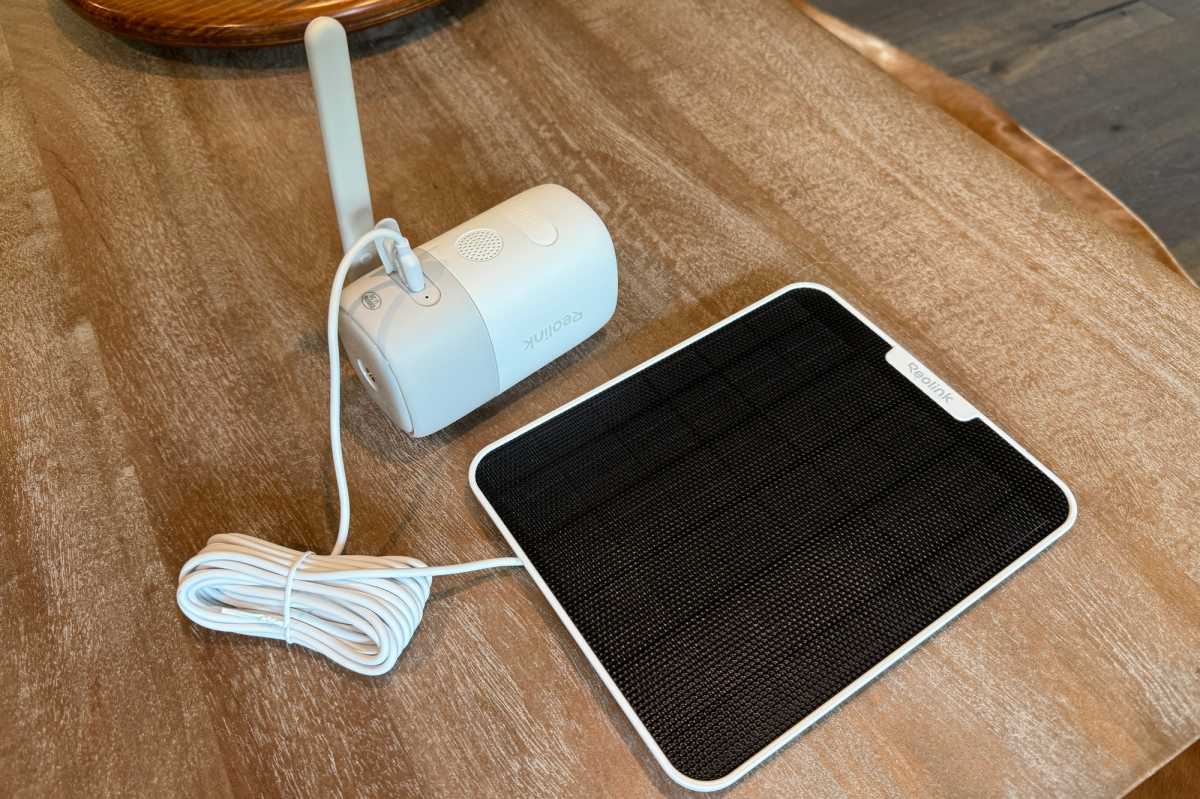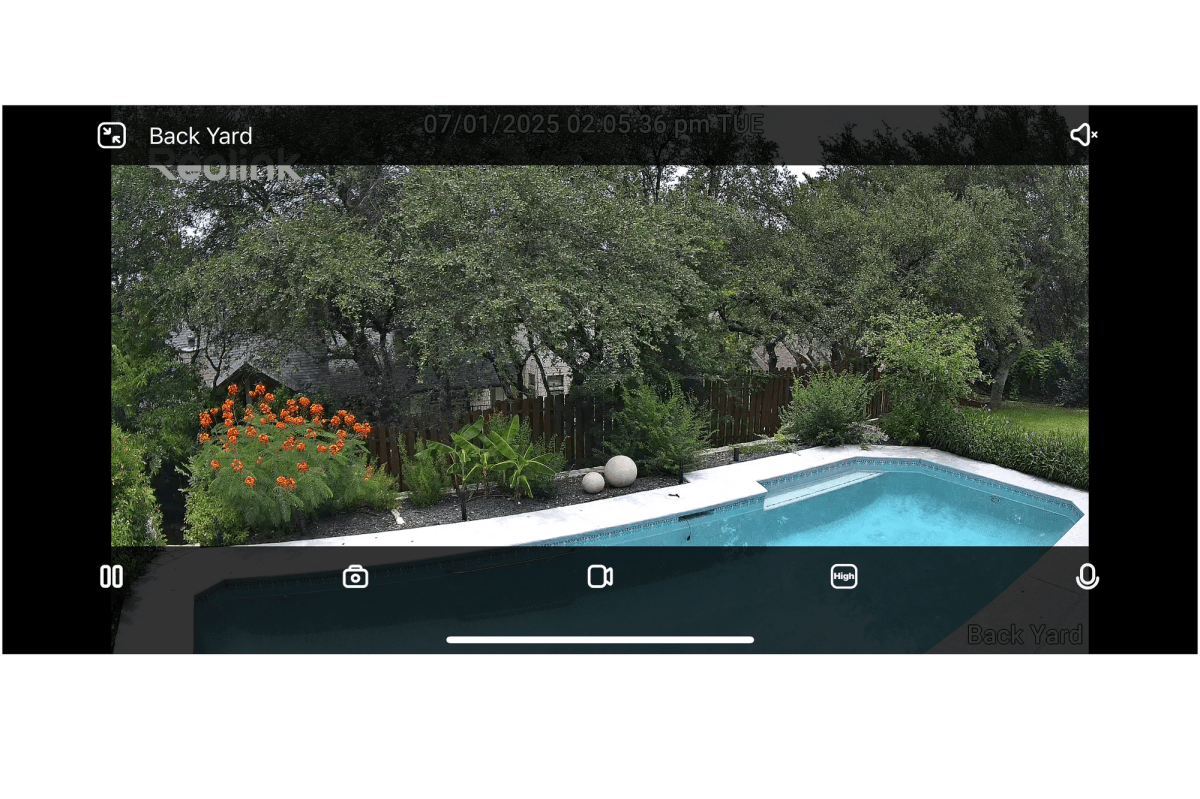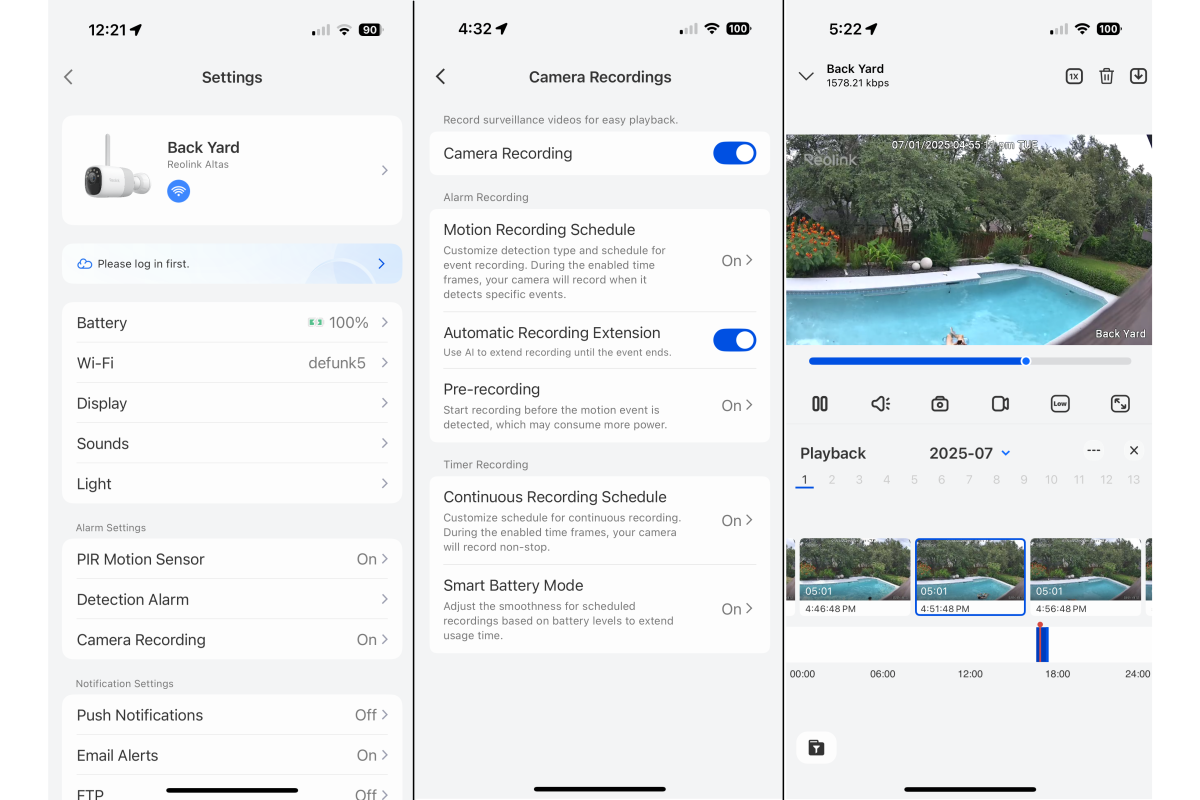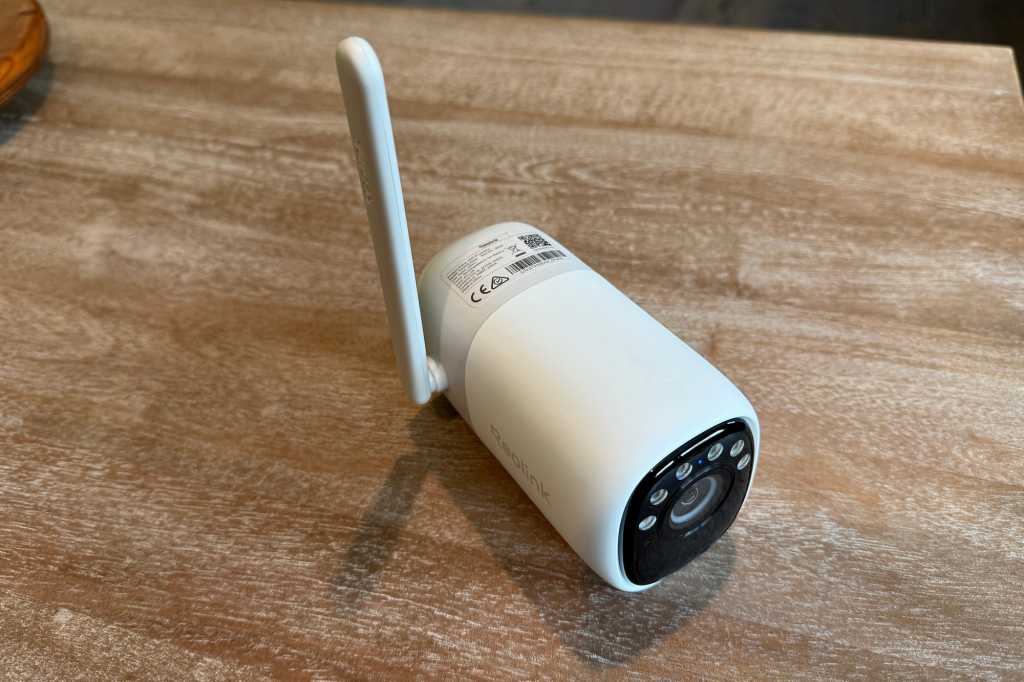Expert’s Rating
Pros
- Optional solar panel is effective at keeping the battery topped up
- Pre-recording option ensures you don’t miss the start of any motion events
- Responsive and quick to load videos, thanks in part to its 5GHz Wi-Fi 6 support
Cons
- No infrared night vision
- Only 2K resolution (although the images look good)
- Confusing and poorly organized app
Our Verdict
Price When Reviewed
This value will show the geolocated pricing text for product undefined
Best Pricing Today
Best Prices Today: Reolink Altas
£139.99
To clarify from the start: The Reolink Altas is an entirely new security camera, even though there is already another Altas-branded product in existence; namely, the Altas PT Ultra (and it is “Altas,” by the way. We haven’t misspelled “Atlas.”) Anyway, while that other Altas is a chunky pan/tilt/zoom camera, this Altas is a bullet-style camera with a fixed lens.
Thanks to its 20,000mAh battery and the 6-watt solar panel bundled with this SKU, Reolink says one hour of direct sunlight daily can power 24/7 continuous recording without the battery ever draining completely. You can also buy the camera without the panel for about $50 less ($149.99 vs. $199.99).
In many ways, the Altas is the svelte, simpler younger sibling of the Altas PT Ultra we reviewed in Septenber 2024, ditching the pan/tilt motor and some of its other luxe features to make for a simpler and more affordable product. Credit to Reolink for taking a hard look at their industrial design with this camera, as the company is not known for always having the most forward-looking hardware. This one, measuring about 5 x 3 x 2.5 inches in size, is only slightly bigger than the palm of my hand, leaving only the oversized antenna to draw attention to itself.
Battery life one of the Reolink Altas’ major selling points. The 20,000 mAh cell can be charged via a standard USB-C cable or the rugged 6-watt solar panel.
Most people will use the provided ball-and-socket mount to attach the camera to a wall or ceiling, but the pole/tree-strap system included with the PT Ultra is also present here; and again, it’s too short to be useful for strapping the camera to anything more than a few inches in diameter.
Specifications

Reolink sent its 6-watt Solan Panel 2 with the Altas for this review. It costs $39.99 if purchased separately.
Christopher Null/Foundry
The Altas is rated IP66 (better than the IP65 rating on the PT Ultra) for weatherproofing, which our guide to IP codes tells us means it can withstand exposure to powerful jets of water. And like its sibling, it’s impervious to the ingress of particulate matter. It has a dual-band Wi-Fi 6 adapter onboard, along with a mic and speaker for two-way audio, an integrated siren, and both black-and-white and color night vision, thanks to Reolink’s ColorX technology.
The camera is a 2K model with resolution of 2560 x 1440 pixels and a 110-degree diagonal viewing angle. Images looked surprisingly good in my testing, and I was able to pick out relatively far-off details, even though its actual resolution is a big step down from the PT Ultra’s 4K resolution.
As with the PT Ultra, battery life is a major selling point. The 20,000 mAh cell can be charged via a standard USB-C cable or the rugged solar panel. The system is so power-conscious that Reolink says it can record continuously for 336 hours (that’s 14 days) without a recharge, or record 5 minutes per day for 540 days.

The Reolink Altas captures video in 2K resolution, which is a step back from the 4K Altas PT Ultra, but the image quality was more than adequate for my purposes, especially at this price.
Christopher Null/Foundry
Those claims didn’t exactly pan out in my testing: I got only about 5 days of uninterrupted recording (without the solar panel, that is) before the battery petered out. Again, Reolink says that even modest sunlight hitting the solar panel will keep it running indefinitely, and that indeed was accurate. With the panel connected I rarely saw the battery at anything below 99 percent.
The Reolink Alta can record to an internal microSD card—capacities up to 512GB are supported—although none is included (Amazon was bundling a 128GB card and a solar panel with the camera at the time of this review). Your other alternative for local storage is to buy a Reolink Home Hub, a $100 mass storage device that you connect to your home network. It supports up to eight Reolink cameras, and it comes with a 64GB microSD card, with slots for two more cards with capacities up to 512GB each. You can read our positive review at the preceding link.
The terms of the optional Reolink Cloud service have not changed, except for support for more cameras and increased storage at the topmost tier. Pricing for the cloud service is $7/month (30 days, 5 cameras, 30GB storage), $11/month (30 days, 10 cameras, 80GB storage), or $16/month (60 days, 30 cameras, 250GB storage). As with the PT Ultra, onboard storage will be perfectly fine for most users, unless you absolutely need the only significant bonus feature the service includes: thumbnail photos delivered with push notifications when motion is detected.
Installation and setup
Reolink has paid less attention to set-up and app-based management. Initial configuration requires scanning a QR code and lots of waiting while loud verbal instructions in multiple languages erupt from the camera’s speaker. The process failed twice when I first tried to set it up, which is frustrating. Certain features in the Reolink app remain obtuse or, at best, horribly translated. Again, “Clear” is the app’s term high-resolution video. “Fluent” is the option for low-res recording.

The Reolink could use a rethink in terms of its layout. All the features you’ll need are there, they can just a bit difficult to find.
Christopher Null/Foundry
As before, continuously recorded video is saved in 5-minute chunks, one right after another, on Reolink’s playback timeline. This is easy to scrub through, and if you’re only recording based on motion detection, the job is even easier thanks to the chronological thumbnails. The Altas also includes a new prerecording option that lets you capture 2 to 10 seconds of video before motion triggers a clip, though this is captured at a user-specified framerate of 1, 3 or 5 frames per second.
It’s essentially a low-speed continuous recording system, though Reolink notes that using it will impact the battery considerably if you don’t have a steady sun source (up to 2 extra hours per day). The prerecording system worked perfectly in my testing, capturing the time just before a person entered the frame, exactly as specified. You won’t notice the lower frame rate for the prerecording because nothing is moving.
The spotlights ringing the front of the camera are brighter than I expected, though their luminosity is not specified. I was able to light up the area for at least 30 feet at full brightness with the spotlights on, and to record in full color. That’s a good thing, because you’ll probably need the lights: Like the PT Ultra, there is no infrared night vision mode on the Altas, and in conditions of true darkness, the image was garbled and unusable, based on my testing with the spotlights turned off.

Reolink’s pre-recording feature captures subjects that trigger the camera’s motion sensor before the camera actually starts to record.
Christopher Null/Foundry
The only way to get any workable image at night is with the spotlights turned on. Fortunately, their brightness is adjustable (and they can adjust automatically), so you don’t blast out the neighborhood.
In my testing, clips lasted as long as motion occurred, with no cooldown between clips. Five minutes appears to be the maximum clip length. Clip thumbnails are also accurately tagged with a type of motion detected in them: person, animal, vehicle, or “others.” All told, the camera works really well, with the lack of infrared night vision the only major downside.
Should you buy the Reolink Altas?
If you don’t need pan/tilt features, the Reolink Altas is an excellent alternative to the Altas PT Ultra, which is bulky and awkward. This camera keeps most of the other features of the PT Ultra and trims about $80 off its suggested retail price.
You’ll find cheaper outdoor cameras on the market—including ones bundled with solar panels—but the overall performance of the Reolink Altas might sway you to shell out a few extra bucks for it. If you are shopping for even less expensive, we’ll tell you which key security camera features you shouldn’t give up in the name of price.
This review is part of TechHive’s in-depth coverage of the best home security cameras.

